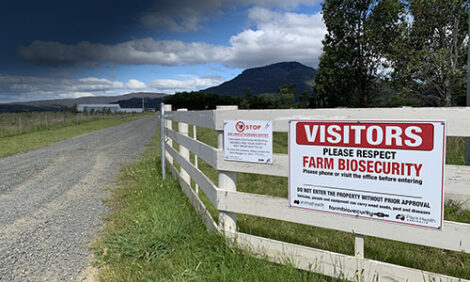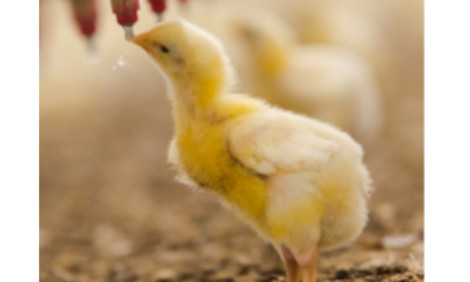



US Poultry Industry Manual - turkey disease surveillance during an FAD outbreak
Surveillance techniques during an FAD outbreak on your farmPart of Series:
< Previous Article in Series Next Article in Series >
Editor's Note: The following content is an excerpt from Poultry Industry Manual: The Foreign Animal Disease Preparedness and Response Plan (FAD PReP)/National Animal Health Emergency Management System (NAHEMS) Guidelines which is designed to provide a framework for dealing with an animal health emergency in the United States. Additional content from the manual will be provided as an article series.
People
Avian influenza viruses are highly transmissible. Movement of people among farms is the most common means by which the virus is transferred from one flock to another. Access to the containment zone is restricted to essential personnel and only necessary movement within the zone is allowed. Regular visits to flocks by service technicians are stopped and replaced by telephone consultations. All personnel are required to follow strict biosecurity procedures for entering and leaving a premises. Disposable personal protective equipment (PPE) should be used and left on the farm. Any non-disposable items must be disinfected, double-bagged, and the outer bag disinfected prior to removal from the farm and disinfection later in a secure area. Personnel need to shower and change clothes after leaving a farm. A record of personnel movement is kept.
Avian influenza can infect people and may even cause death. Appropriate protective gear including a respirator (N-95 or better) and goggles should be worn for one’s personal safety. People entering a positive flock need to be healthy without symptoms of possible human influenza, and they should be up-to-date on their vaccination for seasonal flu. Clinical signs of influenza in people include conjunctivitis, fever, and respiratory disease. While seasonal flu vaccination does not protect against avian influenza, it does minimize the possibility of mixing between human and avian strains of the virus. If any workers in contact with infected flocks develop symptoms consistent with influenza, they must be seen immediately by a physician and tested for influenza. Workers may be put on prophylactic antivirals, but the value of this procedure is controversial. Taking antivirals can provide a sense of false security and relaxation of personal protection.
Cancelling local and regional poultry sales and shows during a foreign animal disease outbreak is a prudent measure to prevent potential spread of the disease to other areas.
Vehicle Traffic
Vehicle access to the quarantine zones is also restricted. This includes movement of animals other than turkeys including other poultry and livestock. Movement is by permit only. Control points along roads into and out of the area may be needed. Vehicles are cleaned and disinfected when leaving an affected farm and when leaving each zone. Portable disinfection stations may be set up to facilitate control of vehicle decontamination. Particular attention is given to the inside of vehicles (they should be either uncarpeted or have rubber flooring that can be easily disinfected), wheels, tires, and undercarriage. Routes by which vehicles travel are recorded and, if available, a GPS monitoring device is placed in each vehicle.
In the event of an H5 or H7 LPAI outbreak, controlled slaughter of flocks may be permitted. Flocks should be processed as soon as possible even if they are not at the normal age. Flocks in the containment area that are too young for processing may need to be euthanized to depopulate the area in preparation for repopulation and release of the quarantine.
Disease Monitoring
Daily mortality for all flocks within the containment area is reported by telephone and any reports of increased mortality are investigated by a foreign animal disease specialist. Extensive sampling of the compost, litter, and environment is done after depopulation. Negative tests for these samples within 24 hours are indicative the disease is not present, but a premise is not declared free of the disease until two consecutive negative tests that are at least seven days apart have been obtained.
Routine surveillance of poultry flocks, including turkeys, for both HPAI and LPAI is done in most poultry producing areas. Birds associated with live poultry markets, birds in the NPIP program (breeders), small hobby (“backyard”) flocks, and waterfowl are also tested. In the NPIP program, testing 30 breeders per flock provides 95% confidence that not more than 10% of the flock has AI. Breeder flocks that test negative are identified as “U.S. H5/H7 Avian Influenza Clean”. Currently 98% of all turkey breeders in the U.S. are tested annually. Six samples are submitted from commercial flocks within 3 weeks of processing. Flocks testing negative are identified as “U.S. H5/H7 Avian Influenza Monitored”. Approximately 90% of commercial turkey flocks are currently being tested. Serum samples are examined for antibodies to AI and tracheal samples from birds submitted for diagnosis of a respiratory disease or an acute egg drop are tested for AI virus.
Commercial influenza rapid antigen tests that provide results in <15 minutes can be used on the farm for preliminary testing. Positive results are meaningful, but negative results should not be interpreted that the flock is not infected. While these tests have high specificity, sensitivity is low because relatively high amounts of virus are needed for the test to be positive (i.e., false negatives are more common than false positives).
Sample Collection
Monitoring is best done by placing mortality in a sealed plastic bag in a bin next to the roadway so that going onto the farm is unnecessary (“barrel surveillance”). Oropharyngeal or tracheal swabs from at least five dead or culled birds are collected. If no dead birds are found on the morning of the sampling, and there are no cull birds from the flock that need to be tested, samples are collected from 11 randomly selected turkeys per flock. Swabs are tested by real time, reverse transcriptase polymerase chain reaction (rRT-PCR) or rapid antigen capture immunoassay. The latter can be done on site to provide a rapid preliminary diagnosis in less than 15 minutes. Samples for virus isolation are collected in a suitable viral transport medium, usually Minimum Essential Medium (MEM) or Brain Heart Infusion (BHI) Medium that contains antibiotics and antifungals to discourage growth of contaminants. Up to five swabs of the same type and source can be pooled into one tube of viral transport medium. If cloacal swabs are also being collected, they should be kept separate and not pooled together with tracheal swabs. Virus isolation takes 3-10 days, but is necessary for confirmation and determination of the virulence and molecular characteristics of the virus. Priority for sampling is given to flocks experiencing clinical signs, especially high mortality, flocks in the Control Area, and flocks in the buffer-surveillance zone that are within 48 hours of processing.
Sample Submission
Samples are submitted to an animal disease diagnostic laboratory with at least BSL-2+ containment facilities that can test for foreign animal diseases. These laboratories form the National Animal Health Laboratory Network and are overseen by the National Veterinary Services Laboratory in Ames, Iowa.
Reference: "USDA APHIS | FAD Prep Industry Manuals". Aphis.Usda.Gov. 2013. https://www.aphis.usda.gov/aph...
The manual was produced by the Center for Food Security and Public Health, Iowa State University of Science and Technology, College of Veterinary Medicine, in collaboration with the USDA Animal and Plant Health Inspection Service through a cooperative agreement.















